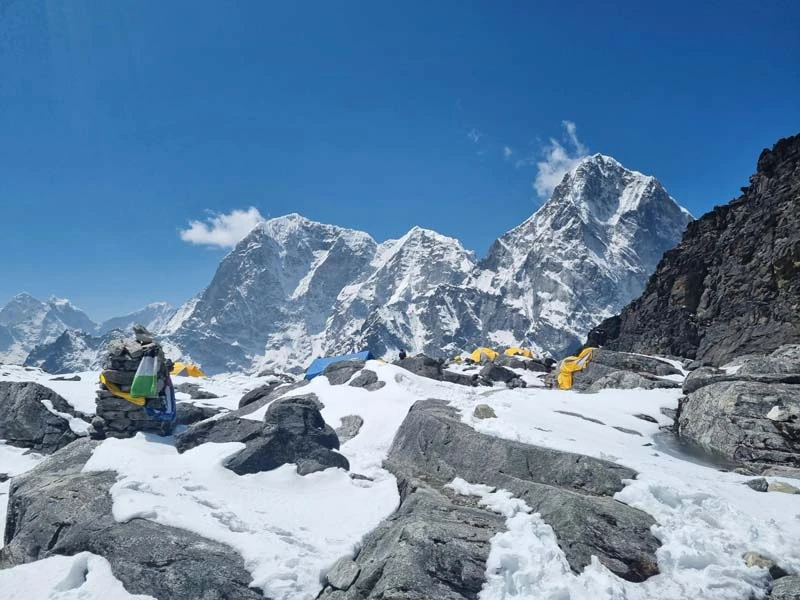Image Credit: pexels.com
Trekking to Everest Base Camp is a ‘must-do’ and often one of the most popular of all the bucket-list treks of the world, and for good reason. Beyond the breathtaking vistas and the awe of being in the shadow of the highest peak in the world, it is an amazing journey into the heart of the Sherpa people’s realm. The rituals and traditions of the Nepalis within the Khumbu vicinity, their amazing experience of religion and background, have to now not be underestimated, and to witness this firsthand is one of the trek’s maximum enjoyable elements.
To truly experience your time inside the Everest location — and to make sure you don’t inadvertently offend anyone while you are there — become familiar with the local tradition. This manual will stroll you through the fundamental steps of demonstrating recognize, certainly attractive with the local people and being a more considerate traveller of their communities.
This article begins by considering the significance of Sherpa culture in the Everest region and why the matter of respecting it is so central for both visitors and residents. It also discusses important cultural manners like greetings, what to wear, and village and monastery protocols. You’ll be taught how to pursue photography respectfully, to care your way around religious sites, and to engage thoughtfully in local customs and festivals. The blog also touches on environmental respect to incorporate into cultural awareness and provides useful advice on how to fit in with locals in order to make authentic friendships. It then concludes with a reminder of the good things that happen when you trek with cultural respect.
The Everest Region, The Heartbeat of Sherpa Culture
The Everest location is inhabited by the Sherpas, who are acknowledged for his or her mountain climbing prowess and wealthy religious traditions primarily based on Tibetan Buddhism. The Sherpa way of life is closely interwoven with the surroundings, as the mountains, rivers, and animals have a significant symbolic role. Their villages are small, insular locations in which traditions that move back generations blend with the contemporary day.
Recognize the Sherpa subculture approach knowledge significance of these things, and the way they form existence. It additionally means acknowledging the sacrifices and labor that Sherpas make a contribution to make trekking and hiking within the location feasible, regularly at high personal risk. In coming to the area with humility and an open thoughts, trekkers can receive a whole lot more than most effective a physical project, but a unique cultural richness.
Saying Hello to Locals: The Ultimate Respect Gesture from the Get-Go
Small acts of kindness and courtesy are going a long way within the Everest place. The beautiful conventional greeting is called the “Namaste,” and is a tremendous thing to use in order to show neighborhood human beings whom you admire their way of life. It consists of pressing your hands collectively in front of your chest and bowing slightly as you say “Namaste,” which translates to “I bow to the divine in you.” Some easy Nepali or Sherpa phrases below your belt will also make you popular with the locals.
At the time of introduction and meeting with the seniors or the monks, it is good to avoid direct eye contact and in their culture it is quite impolite. It’s always proper to greet people with a grin and ask for permission earlier than coming into anyone’s living or private area.
Dressing Modestly and Appropriately
The hiking crowd typically dons outside tools; however, it’s true to get dressed modestly while getting into villages and spiritual sites. Avoid garments that might be too revealing, like shorts and tank tops. As an alternative, wear lengthy pants and shirts that cover your shoulders, each as a courtesy to the local customs and as a way to blend in.
Before coming into a monastery, take off your hat and sunglasses, and put on modest apparel. An oversized scarf or scarf is also beneficial to have on hand to throw over your shoulders – or your head if vital! Don’t forget that the climate is cold even throughout the day, so layered garb is each realistic and cultural.
POLITENESS AND VILLAGES 199 Manners and Customs of Villages and Monasteries
In the villages of the Everest region, tradition is alive and well. When passing through, remember to keep the noise down and don’t talk too loudly. “You might be in someone’s way here, as many locals come here to follow their daily routines, such as farming, religious activities, or daily family.”
In monasteries, don’t be talkative, be of a quiet spirit. (Do not touch sacred objects or cross in front of someone who is praying or meditating.) Temple photography is not allowed unless given permission. But when visiting local festivals or ceremonies, stand by respectfully and do not interfere with the ceremonies.
Photography: Capture with Respect
Of course, it’s important to take photographs throughout a trek, but admire should be paid to the locals, specifically in the villages. They are constantly looking for consent before you take a photo of them or a collection. Many residents are more than satisfied to be photographed, but there are a few who may sense it’s strange or that you are being disrespectful.
Respect cultural sensitivities— chorus from taking photos of religious ceremonies or right away clicking away at monks. Use the camera to help celebrate the culture, not exploit it. When all else fails, pleading and smiling are a good standby.
Attending Local Customs and Festivals
If your experience takes place in the vicinity during a local festival, like Teej, Losar, or Dumji, don’t hesitate to enroll in it, or at least watch, with all of your senses open. The performance provides some special glimpses of Sherpa religious practices, bond-making community,t y, and traditional tune and dance.
Be dressed respectfully, and follow the local advice on participation. Remember that you are a traveler, now not a congregant, in service of God, so observe with respect, without interfering in rituals. Commiserating in the course of these instances could make you laugh at the way of life and make the surrounding moments more meaningful.
Cultural Natural Respect for the Environment
At the heart of Sherpa belief is an abiding respect for the environment. Mountains and rivers are sacred, and polluting or leaving waste is considered not only disrespectful to nature but to the community.
As a hiker, adhere to all waste disposal, leaving no hint, and minimum impact rules. Take a stand on the back of neighborhood sustainable projects, and use reusable water bottles and biodegradable merchandise. With the aid of preserving the surroundings, you’re respecting the cultural values that breathe life into the Sherpa life.
Building Genuine Connections with Locals
One of the maximum pleasant components of trekking to Everest Base Camp is being able to meet and socialize with close by Sherpa people, guides, and the proprietors of the tea houses. Ask questions about their manner of lifestyle, traditions, and way of living to show that you are really interested in them. Be an energetic listener and relate respectfully to stories from your relatives.
Do not speak approximately doubtlessly controversial subjects like politics or faith except locals broach the subjects. Recognize barriers and don’t pry for non-public details. hardly notice it.”) Small acts of kindness — supplying to carry a bag, sharing a meal — can construct lifelong connections.
Why You Need to Respect Local Culture While Trekking
recognize and respect the tradition of the area people, and your trek turns into a lot more than a physical journey. It’s gateways to real experiences, deeper conversations, and extra understandings. You are also much more likely to be welcomed and helped by means of the locals on the way to make sure a more secure and high-quality journey.
Further, accountable tourism supports hold Sherpa way of life and traditions, accordingly enabling those societies to flourish in a rapidly developing tourist marketplace. Your mind is good for the future of the Valley.
Final Thoughts
Everest Base Camp Trek is not, in reality, an adventure in nature — it’s additionally a cultural journey. Through ultimate respect of neighborhood traditions, customs, and those, you are paying your dues to the mountains and to the community of beings who inhabit them. This reverence makes an easy hike into an existence-changing journey of network, schooling, and gratitude.
Just remember, your decisions have an impact long after you’ve destroyed our trails. Approach your travel with an open heart, patience, and humility, and the Everest region will embrace you with open arms -and some lifetime memories.



